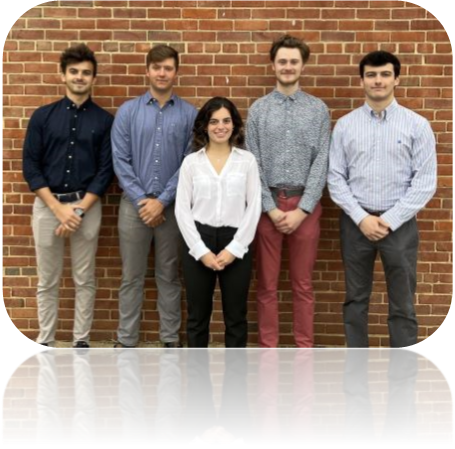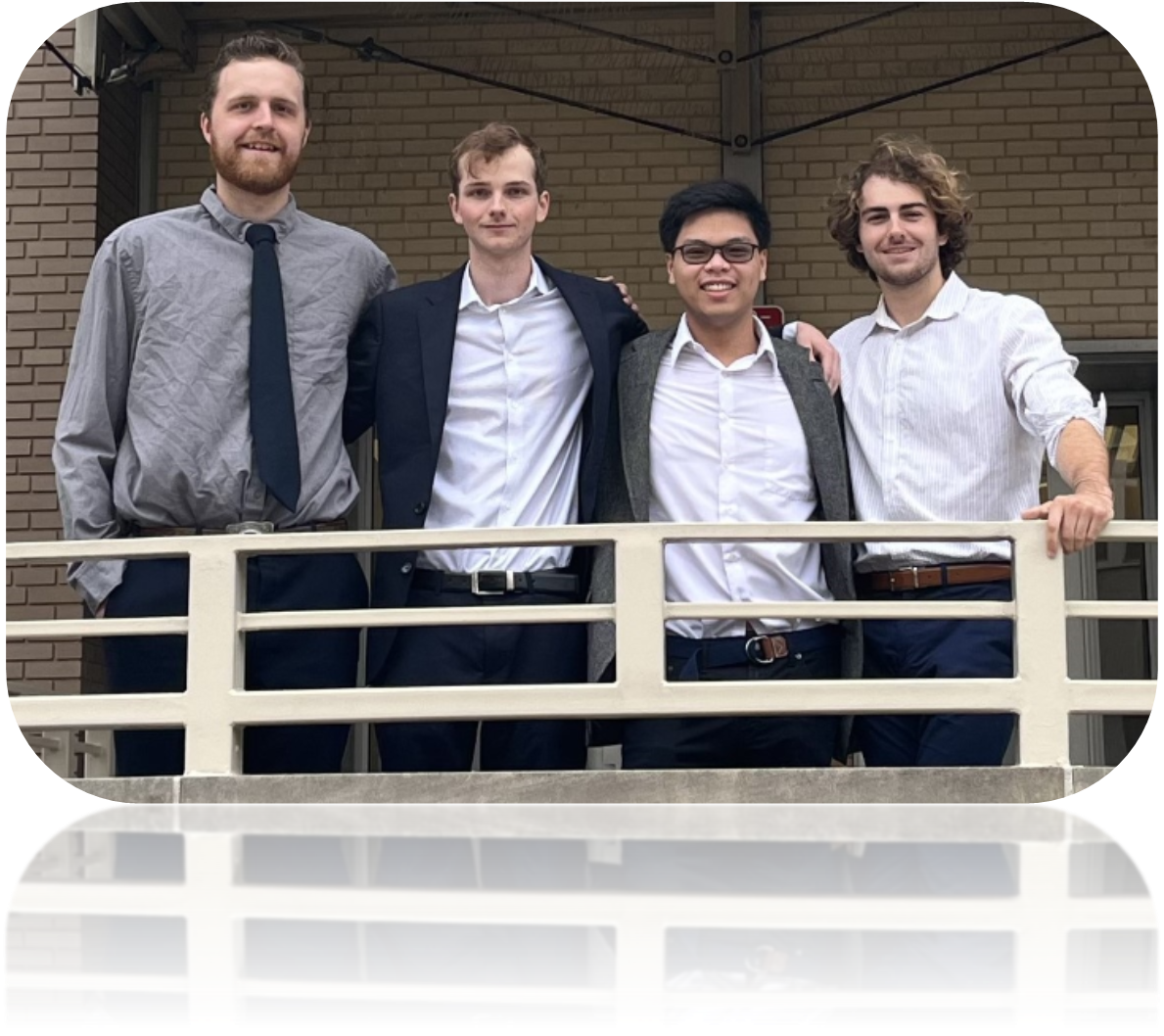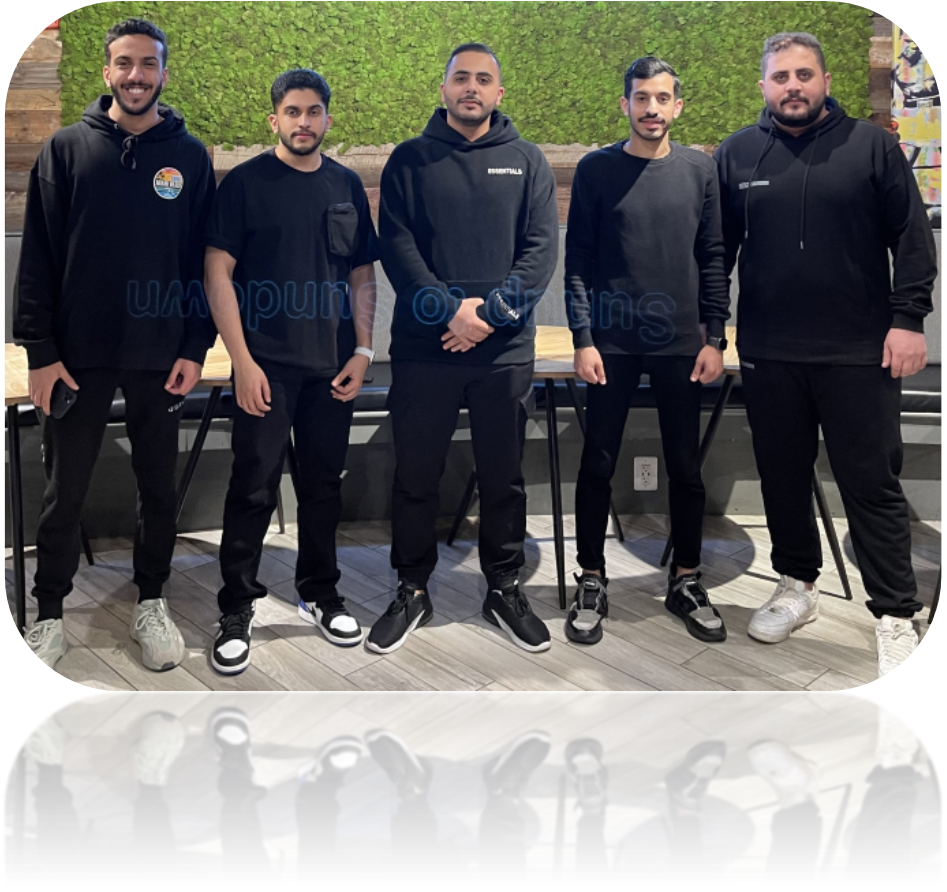Benchy Rapid Replicator (BRR)
Paul Bello, Kaitlyn Caple, Matthew D'Ortona, Luke LaRosa, Alexander Walters
Advisor: Dr. Jandro Abot, Dr. Gerard Carroll, Dr. Sergio Picozzi
The Benchy Rapid Replicator (BRR) is intended to 3D print a model, known as the“Benchy", within the time frame of 10 minutes. The time to print is the main problem that is keeping technology from entering mainstream manufacturing and is the focus of the BRR project. This engineering design project aims to benefit the science of additive manufacturing and rapid prototyping. BRR is built based on five critical systems: Structure, Motor Mechanics, Cooling, Firmware, and Electrical. By combining these systems, it is expected for the printer to be able to print at the highest possible acceleration and velocity values. The part selection was influenced by the thermodynamic problem being presented by the desired printing speed. The cooling solution was designed to cool this high volume of extruded filament quickly and efficiently. The use of four LDO Nema stepper motors ensure that the two primary axes of movement are able to reach accelerations high enough to match the output of the hotend. To power these systems, a specialized control board that is capable of utilizing a secondary processing unit and then relaying the motor commands to the motor pairs is being used.
Aerial Reconnaissance Technology
Simone Fera, Alberto Lopez, Joseph Jonas, Skylar McLean, Travis Duchene
Advisor: Dr. Jandro Abot, Dr. Gerard Carroll
Unmanned Aerial Vehicles (UAVs) have revolutionized the defense and search-and-rescue sectors, and are now a widely used tool in saving human lives. Notable challenges for UAVs in this application are ease of control and navigation. This project aims to construct and test a UAV that simplifies the piloting user experience, especially in navigating tight spaces. This was accomplished by using ArduPilot firmware with a PixHawk Px4 flight controller, both of which are capable of supporting several subsystems and recording flight performance data. A collision avoidance system was constructed using ultrasonic sensors and programmed using the ArduPilot mission planner package. The program detects when the UAV is within six inches of an obstacle and autonomously steers the vehicle away. Additionally, the live video stream from both thermal and optical cameras are viewed on a compact display worn on the forearm, allowing the user to switch between feeds easily. The semi-autonomous piloting and convenient interface free the user from the difficulty of navigating precarious environments with bulky, overcomplicated controls.
CubeSat Deorbit Thruster
Cagney Boyle, Nicolas Fernandez-San Cristobal, Daniel Marcello, Daniel Taylor
Advisor: Dr. Jandro Abot, Dr. Gerard Carroll
The objective of this project is to design and build a 3D printed CubeSat thruster capable of generating enough thrust to decelerate the CubeSat by 82 m/s and transfer the Cubesat from its functional orbit at a height of 400 km to an ozone layer burn up orbit at a height of 120 km. The optimum 4-motor thruster design must deliver 76 N of thrust for 3.5 seconds to achieve a deorbit maneuver. The design of the thruster is optimized for Metal 3D printing and simplified for assembly with fasteners and nuts. The CubeSat thruster is tested using a load cell and a data acquisition assistant to collect data during the ignition phase. The data is then analyzed and evaluated to determine the success of the thruster.
Cryogenic Cooling Transportation of Vaccines with Advanced Controls and Flexible Power Delivery
Nicholas Golde, Kaitlyn McDonough, Erin Novak, Christopher Wysocki
Advisor: Dr. Jandro Abot, Dr. Gerard Carroll
This engineering design project will provide a cooling solution for medical entities needing cryogenic cooling. More specifically, the current COVID vaccine must be kept at -70 degrees C for transport. After contacting hospital logistics experts, some problems were identified. The Stirling cooling cycle is a thermodynamic cycle that uses two isothermal and isobaric processes. The device has a compressor and free moving displacer along a shaft. This principle allows the box to reach down to cryogenic temperatures. All properties were considered to size the cooler. A forced air system was incorporated. The first concern expressed by the experts was a lack of understanding how many workable vaccines they would acquire and when they would arrive. To solve this problem a networkable controller with a web server function is included in the design. Controllers of multiple boxes can be networked together and allow operators to see all the information needed. This controller also reduces energy demand by reacting to system conditions. Another secondary concern is to have a backup power delivery system tied into the main power and will be automatically charged whenever primary power fails.
SAE Aero Design East Competition
Matthew Haigwood, Hamad Hussain, Seed Almarri, Domick Fedorchak
Advisor: Dr. Jandro Abot, Dr. Gerard Carroll
The goal of the 2022 aero design competition is to build an RC plane that can carry as much cargo as possible. The cargo comes in two forms: weighted cargo plates and soccer balls. The plane must carry at least one soccer ball, and then as many weighted plates as possible. For the competition, the teams are scored in three categories: technical report, presentation, and flight demonstration. Our design is a 15 lb single wing plane. It has an 8 ft wingspan with a Clark-Y airfoil, and uses Spektrum RC products to control the plane through the transmitter, receiver, and servos. The plane weighs 15 pounds, and is composed of aluminum for the landing gear, body sled, and beam connecting the tail. The rest of the plane is made out of poplar wood, which is the wing spar, airfoil ribs, and cargo bay. It has a cruise velocity of 63 mph, and has a takeoff weight of 20 lbs including the cargo inside of the plane. The competition will take place in Dallas in May, and will compete against the 62 other teams from across the globe.
Sensory Equipped Buoyancy Engine
Matthew Crawford, Malachi Phillips, James Schmalz, Chris Jenkins
Advisor: Dr. Jandro Abot, Dr. Gerard Carroll
The mission for our senior design project was to construct a closed fluid system capable of controlling the buoyancy of vehicle autonomously, while recording a battery of samples such as pressure and temperature as it performs a controlled decent and ascension through a rated body of 100 meters of water. The engine is built with an aluminum structure that will enclose a 3-gallon tank, two automated solenoid valves, a pump system, and sensory equipment. The system will fill a bladder attached to the outside of the engine. The closed loop system will pump isopropyl alcohol, which is less dense than water, through the system and fill the bladder causing the engine to float to the surface. The field test was performed in the 13 ft CUA diving pool. During the experiment the sensory equipment was able capture data points at a 0.5 second interval for later analysis. The system is powered and controlled autonomously by 12 V 20,000 mAh rechargeable batteries and Arduino Uno's.
Gun-Shot Acoustic Detector
Abdullah Almuflih, Ahmed Almuflih, Suhayb Alharbi, Hisham Alqasoumi, Abdullatif Alforaih
Advisor: Dr. Jandro Abot, Dr. Gerard Carroll
An acoustic detector is a sensing device mounted on a pole. The detector is essential because it helps the authorities and private parties to respond in time and helps prevent crimes in an insecure location. The objective of the research is to design a smart pole system that will detect firearm sounds, rapidly transmit data to authorities, investigate the appropriate location for the detector, and works autonomously. The code for detection was developed in Matlab, where different concepts of the gunshot acoustic detector were tested. The results suggested that the device needed two omnidirectional microphones, a DAQ for converting signals, signal conditional, a solar panel for energy, and a two-meter pole. The structure of the solar-powered gun-shot acoustic detector is weatherproof.








